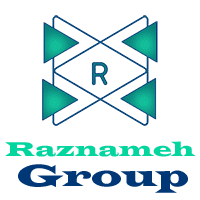Introduction to Brand Awareness
Brand awareness has become an important part of marketing in the business world. To successfully use this strategy and navigate your own brand awareness, this article will inform you about all the things you need to know about brand awareness.
Check the course: https://erp.raznameh.org/slides/the-sales-and-marketing-playbook-15
Definition of Brand Awareness
To put it simple, brand awareness describes the familiarity that customers have with a specific product or service, new or revised. Ideally, through brand awareness customers should not only recognize the product but also gain positive perceptions of it. By that, brand awareness also intends differentiation from the competition and lately, especially social media has become an important and powerful tool for that.
The Importance of Brand Awareness in Marketing and Business Success
Brand awareness also plays an essential role in marketing and business success for several reasons:
- Customer Trust and Credibility: Familiarity with a brand builds trust. Customers are more likely to purchase from brands they recognize, as established awareness suggests reliability and quality. A research by Edelman states that 81% of customers need to trust a brand before making a purchase.
- Expansion: Familiarity with a brand fosters a sense of trust and credibility. When customers recognize a brand, they are more likely to associate it with quality and reliability. This trust reduces perceived risk during the purchase process.
- Revenue Generation: Trust leads to higher conversion rates, as customers are more willing to buy from brands they know. This can result in increased sales volume and revenue, as customers are likely to make repeat purchases and explore additional products offered by the brand.
- Business Success: Brands that cultivate trust can also command customer loyalty, translating into stable, long-term revenue streams. This loyal customer base is less price-sensitive, which can enhance profitability.
- Influences Purchasing Decisions: Brand awareness can significantly affect customer choices. When faced with multiple options, customers tend to choose familiar brands, making awareness a critical factor in decision-making. A research by Nielsen states that 77% of customers are more likely to buy from brands they recognize.
- Expansion: Brand awareness significantly sways customer choices, especially when customers face multiple options. The familiarity of a brand can serve as a heuristic, simplifying the decision-making process.
- Revenue Generation: By positioning themselves as a preferred choice, well-known brands can capture a larger market share. This directly translates to higher sales, as 77% of customers are inclined to choose familiar brands, driving consistent revenue growth.
- Business Success: With strong brand awareness, businesses can enhance their market position, reducing the impact of competitors. This established presence makes it easier to introduce new products, thereby maximizing revenue opportunities.
- Competitive Advantage: In crowded markets, brands with higher awareness stand out. They can attract more customers and retain them, making it harder for new competitors to gain traction. A research by PwC states that 73% of customers believe that brand reputation influences their purchasing decisions.
- Expansion: In saturated markets, higher brand awareness can differentiate a company from its competitors. Recognizable brands often have a stronger customer base and more resources to invest in marketing and innovation.
- Revenue Generation: A strong brand can attract more customers, leading to increased sales. The perception of reputation and reliability allows these brands to sustain higher prices and improve margins, further boosting revenue.
- Business Success: This competitive edge not only helps retain existing customers but also complicates the entry for new competitors. A solid brand presence can create barriers to entry, ensuring ongoing profitability.
- Customer Loyalty: Strong brand awareness contributes to customer loyalty. Familiar brands create emotional connections with customers, encouraging repeat purchases and long-term relationships. A research by Brand Keys states that 67% of customers say their loyalty is influenced by brand familiarity.
- Expansion: Strong brand awareness fosters emotional connections with customers. When customers identify with a brand, they are more likely to engage in repeat purchases and advocate for the brand within their networks.
- Revenue Generation: Loyal customers are often less sensitive to price changes and more willing to try new products, leading to sustained sales. Repeat customers contribute significantly to revenue, as acquiring new customers is typically more expensive.
- Business Success: High customer loyalty translates to lower churn rates and more stable cash flow, providing a foundation for sustained growth and expansion opportunities.
- Word-of-Mouth Marketing: Increased brand awareness leads to higher chances of word-of-mouth referrals. Satisfied customers are more likely to recommend brands they know, further expanding their reach. A research by Nielsen states that 92% of customers trust recommendations from friends and family more than advertising, which is often driven by brand awareness.
- Expansion: Increased brand awareness enhances the likelihood of positive word-of-mouth referrals. Satisfied customers become brand advocates, sharing their experiences within their personal networks.
- Revenue Generation: Word-of-mouth referrals can be highly effective in driving new customer acquisition. Since 92% of customers trust recommendations from friends and family, these referrals can lead to lower customer acquisition costs and increased sales.
- Business Success: A strong referral network expands market reach and enhances brand credibility, creating a virtuous cycle of growth and increased market penetration.
- Market Perception: A well-known brand is often perceived as a leader in its industry. This perception can enhance the brand’s image, making it more appealing to customers. Brands with high awareness can command a price premium; a research by Stackla states that 70% of customers are willing to pay more for a brand they trust.
- Expansion: Well-known brands are often perceived as leaders within their industries. This perception not only enhances their reputation but also influences customer behavior, making customers more inclined to choose them over lesser-known competitors.
- Revenue Generation: High brand awareness can justify premium pricing, as customers are willing to pay more for brands they trust. This pricing power directly impacts revenue and profit margins.
- Business Success: By cultivating a positive market perception, brands can leverage their status to explore new revenue streams and partnerships, further solidifying their market position.
- Cost-Effective Marketing: Established brand awareness can lead to more effective marketing efforts. Brands with high recognition can achieve better results with less investment in advertising, as customers are already familiar with them. Companies with strong brand awareness see a 10-20% higher return on investment (ROI) on marketing spend, according to a research by HubSpot
- Expansion: Established brand awareness can lead to more efficient marketing efforts. Brands that customers recognize can achieve greater marketing impact without proportional increases in advertising spend.
- Revenue Generation: Companies with high brand recognition often see a 10-20% higher return on investment (ROI) for their marketing efforts, resulting in more effective use of marketing budgets and improved profitability.
- Business Success: This cost-effectiveness allows brands to allocate resources to innovation and expansion, contributing to sustained growth and market presence.
- Opportunities for Expansion: Strong brand awareness can facilitate entry into new markets or the launch of new products. Customers are more likely to try new offerings from a brand they know and trust. A research by Nielsen states that 60% of customers are likely to try new products from brands they are familiar with.
- Expansion: Strong brand awareness facilitates market entry and product launches. Customers are more inclined to try new offerings from a brand they know and trust, reducing the risk associated with new product adoption.
- Revenue Generation: By leveraging existing brand equity, businesses can quickly generate revenue from new products or services, enhancing overall business performance.
- Business Success: This capability to expand into new markets or product categories with minimal resistance increases growth potential and helps diversify revenue streams.
- Feedback and Improvement: Brands with high brand awareness can gather valuable customer insights through feedback, allowing them to improve products and services based on established relationships. Businesses that actively collect and utilize customer feedback improve their overall brand perception by up to 20%, according to a research by Qualtrics.
- Expansion: Brands with high awareness can effectively gather and utilize customer feedback, allowing them to refine products and services. Engaging with customers fosters a sense of community and belonging.
- Revenue Generation: By continuously improving based on customer insights, brands can enhance product quality and customer satisfaction, leading to increased sales and repeat business.
- Business Success: Businesses that actively incorporate feedback into their strategy can boost brand perception and loyalty, creating a competitive advantage that drives long-term success.
Brand awareness is a cornerstone of marketing and business success. By cultivating recognition and familiarity, brands can enhance customer trust, drive sales, and build lasting relationships, ultimately leading to sustained growth and profitability. The statistics illustrate how it drives trust, influences purchasing behavior, enhances customer loyalty, and ultimately contributes to long-term business success.
How Brand Awareness Influences Customer Decision-Making
To understand how brand awareness influences customers’ decision-making, it is important to recognize that every customer’s path to purchase is unique and complex. A high percentage of customers use multiple channels to shop and as easily someone decides to buy, customers can retreat from their purchase desire. While many companies struggle with this customer behavior, quite a few also thrive from it, successfully developing their brand knowing the big influence of brand awareness. The following paragraph underlines how dominantly brand awareness influences customers decision-making.
- Recognition and Familiarity: Customers are more likely to choose brands they recognize. Familiarity reduces perceived risk, as known brands are often associated with quality and reliability. A research by Nielsen states that 59% of customers prefer to buy products from brands they know, indicating that familiarity breeds trust.
- Expansion: Recognition and familiarity with a brand play a crucial role in customer behavior. When customers encounter brands they recognize, they often associate them with quality and reliability. This familiarity decreases the perceived risk of making a purchase, making it easier for customers to choose a brand.
- Revenue Generation: Familiar brands tend to see higher sales volumes because 59% of customers prefer to buy from brands they know. This preference can translate into increased market share and revenue, as recognized brands benefit from repeat purchases and customer loyalty.
- Business Success: Building brand recognition can lead to sustained customer relationships, which provide a consistent revenue stream. A strong brand presence also enhances competitive positioning, making it easier to introduce new products or services.
- Consideration Set: When making purchasing decisions, customers typically have a “consideration set” of brands they know. Higher brand awareness increases the likelihood that a brand will be included in this set, leading to greater chances of purchase. A research by McKinsey states that 60% of customers report that brand awareness affects their purchasing decisions, particularly in competitive markets.
- Expansion: The “consideration set” refers to the group of brands that a customer actively considers when making a purchase decision. Higher brand awareness increases the likelihood that a brand will be included in this set, which is crucial in competitive markets.
- Revenue Generation: According to McKinsey, 60% of customers report that brand awareness significantly influences their purchasing decisions. By increasing brand visibility, businesses can ensure they are part of customers’ consideration sets, leading to higher conversion rates and ultimately, increased sales.
- Business Success: Brands that successfully establish themselves in customers’ consideration sets can more easily capture market share. This positioning reduces the impact of competitor offerings and solidifies the brand’s presence in the minds of customers.
- Emotional Connections: Familiar brands often evoke positive emotions and associations. This emotional connection can sway decisions, as customers may choose brands that resonate with them on a personal level. A research by Deloitte states that 84% of customers say they prefer brands that share their values, indicating that emotional resonance drives purchasing behavior.
- Expansion: Familiar brands often foster emotional connections that resonate with customers. These emotional ties can influence purchasing decisions, as customers are more likely to support brands that align with their personal values and experiences.
- Revenue Generation: Research by Deloitte indicates that 84% of customers prefer brands that share their values. Brands that cultivate these emotional connections can experience increased customer loyalty and advocacy, driving revenue growth through repeat purchases and referrals.
- Business Success: Emotional resonance not only enhances customer retention but also encourages word-of-mouth marketing. Customers who feel a connection to a brand are more likely to recommend it to others, expanding the brand’s reach and potential revenue.
- Trust and Credibility: Established brand awareness fosters trust. Customers are more inclined to buy from brands they trust, viewing them as credible and authoritative within their market. A research by Nielsen states that 66% of customers feel more secure buying from a brand they recognize, as it reduces the perceived risk associated with the purchase.
- Expansion: Established brand awareness fosters a sense of trust and credibility among customers. Recognizable brands are often viewed as more authoritative, reducing perceived risks associated with purchases.
- Revenue Generation: According to Nielsen, 66% of customers feel more secure buying from recognized brands. This trust can lead to higher conversion rates and increased sales, as customers are more inclined to make purchases from brands they believe are credible.
- Business Success: Brands that build trust can benefit from customer loyalty, resulting in long-term relationships that stabilize revenue. A credible brand also has a competitive advantage, making it easier to navigate market fluctuations.
- Influence of Advertising and Marketing: Consistent exposure to a brand through various marketing channels reinforces awareness, shaping customer perceptions and preferences. The more customers see and hear about a brand, the more likely they are to choose it. A research by Nielsen states that 72% of customers say they feel a stronger connection to brands that are actively advertised.
- Expansion: Consistent exposure through various marketing channels reinforces brand awareness and shapes customer perceptions. The more frequently customers encounter a brand, the more likely they are to develop positive associations with it.
- Revenue Generation: Nielsen’s research indicates that 72% of customers feel a stronger connection to actively advertised brands. This connection can lead to increased sales, as consistent marketing efforts enhance brand recall and encourage purchases.
- Business Success: Effective advertising can not only drive immediate sales but also build long-term brand equity. Brands that invest in strategic marketing can enjoy a compounding effect on their revenue as awareness grows over time.
- Social Proof and Recommendations: Awareness often leads to conversations about a brand. If customers see friends or influencers endorsing a familiar brand, they are more likely to trust it and consider it in their purchasing decisions. A research by BrightLocal states that 84% of customers trust online reviews as much as personal recommendations, which are often influenced by brand familiarity.
- Expansion: Brand awareness often catalyzes discussions about a brand, especially in social contexts. When friends or influencers endorse a familiar brand, it amplifies trust and can influence purchasing decisions significantly.
- Revenue Generation: BrightLocal reports that 84% of customers trust online reviews as much as personal recommendations. Brands that leverage positive social proof can drive higher conversion rates, as customers are more likely to choose brands that come recommended by others.
- Business Success: By cultivating a positive reputation and encouraging satisfied customers to share their experiences, brands can enhance their visibility and credibility, leading to increased sales and market share.
- Price Sensitivity: Customers may be less price-sensitive toward brands they are aware of and trust. They may be willing to pay a premium for familiar brands, believing they offer greater value. A research by Stackla states that 70% of customers are willing to pay more for a brand they trust, reflecting the influence of brand awareness on purchasing behavior.
- Expansion: Customers who are aware of and trust a brand may be less sensitive to price changes. Familiarity with a brand often leads customers to perceive greater value, allowing brands to charge premium prices.
- Revenue Generation: Research by Stackla shows that 70% of customers are willing to pay more for a brand they trust. This willingness to spend can lead to improved profit margins and higher overall revenue.
- Business Success: By establishing a strong brand presence, companies can create a buffer against price competition, allowing them to maintain profitability even in challenging market conditions.
- Brand Loyalty: High brand awareness can lead to loyalty, where customers repeatedly choose the same brand over others. This loyalty simplifies decision-making, as they opt for the brand they know. A research by HubSpot states that 77% of loyal customers are more likely to engage with and purchase from brands they are aware of, reinforcing the cycle of awareness and loyalty.
- Expansion: High brand awareness often translates into customer loyalty. When customers repeatedly choose the same brand, it simplifies their decision-making process, as they are less likely to consider alternatives.
- Revenue Generation: HubSpot states that 77% of loyal customers are more likely to engage with and purchase from familiar brands. This loyalty drives repeat purchases, enhancing overall sales and stabilizing revenue streams.
- Business Success: Cultivating brand loyalty leads to lower customer acquisition costs and a more predictable revenue flow. Loyal customers can also act as brand ambassadors, further increasing brand awareness and attracting new customers.
- Reduced Cognitive Load: Familiar brands reduce the effort customers need to make when deciding. When faced with multiple options, customers can rely on their existing knowledge, making quicker decisions. A research by Nielsen states that 62% of customers are more likely to choose a familiar brand when they have a limited amount of time to decide, demonstrating how brand awareness simplifies choices.
- Expansion: Familiar brands help reduce the cognitive effort required during decision-making. When faced with multiple choices, customers can rely on their existing knowledge, which streamlines their purchasing process.
- Revenue Generation: According to Nielsen, 62% of customers are more likely to choose a familiar brand when they have limited time to decide. This tendency can lead to increased sales, particularly in fast-paced shopping environments.
- Business Success: By minimizing decision fatigue, brands can enhance the customer experience, leading to higher satisfaction and loyalty. A seamless decision-making process can significantly impact sales, especially in competitive markets.
Overall, brand awareness plays a pivotal role in shaping customers behavior and decision-making. By enhancing recognition and fostering emotional connections, brands can significantly influence how customers perceive and select products, ultimately driving purchasing decisions.
The Stages of Brand Awareness
To successfully build a brand, several stages are necessary to go through, each representing a different level of customer familiarity and recognition: Unaware, Brand Recognition, Brand Recall, Top-of-Mind Awareness, Brand Preference, Brand Loyalty and Brand Advocacy.
Definition of the Stages
In the Unaware stage customers do not know about the brand or its offerings. At this stage, marketing efforts focus on introducing the brand to the target audience. A research by HubSpot states that around 70% of customers do not recognize brands when making purchasing decisions, highlighting the need for initial awareness efforts.
The Brand Recognition stage describes the time period in which customers can recognize the brand when they see its logo, packaging, or advertisements. They may associate it with certain products or services, but they do not necessarily recall it without prompts. A study by The Logo Company found that 82% of customers feel more positive about a brand when they see its logo repeatedly, indicating the effectiveness of visual branding.
In the Brand Recall stage a customer will recall the existence of the brand even if they are not totally aware of it yet. Customers will likely react positively to the name of the brand, its logo, slogan or color scheme. According to a research by MarketingProfs, brands that achieve strong recall often see a 20-30% increase in sales compared to those that do not, emphasizing the value of being memorable.
The Top-of-Mind Awareness stage is reached when customers directly think about a specific brand when discussing an industry or similar products. The brand is literally on top of the customers mind and therefore, more likely to be purchased. It signifies a strong presence in the customer’s memory and indicates high brand salience. A research by CEB indicates that 46% of customers are more likely to purchase a product from a brand that comes to mind first when thinking about a specific category.
The Brand Preference is the stage in which customers have developed a preference for the brand over others. They recognize it as a favored choice and may actively seek it out when making purchasing decisions. A study by Nielsen found that 59% of customers prefer to buy products from brands they know, underlining the importance of developing strong brand preferences.
At the Brand Loyalty stage, customers consistently choose the brand over competitors, often resulting in repeat purchases. Loyalty is often driven by positive experiences and emotional connections with the brand. A research by Bain & Company states that loyal customers are worth up to 10 times their first purchase, demonstrating the significant value of cultivating brand loyalty.
The Brand Advocacy stage describes customers that become advocates for the brand, recommending it to others and sharing positive experiences. This stage signifies a strong emotional bond and active engagement with the brand. A research by Nielsen states that approximately 83% of customers trust recommendations from friends and family over any other form of advertising, highlighting the power of brand advocates.
Marketing Strategies for Each Stage
Understanding these stages helps brands develop targeted marketing strategies to move customers through the awareness funnel, enhancing recognition, preference, foster loyalty, and ultimately achieve sustainable growth. The statistics emphasize the critical role that each stage of brand awareness plays in influencing customer behavior and driving business success. Each stage requires different tactics and approaches to effectively build and maintain brand awareness.
In the Unaware stage, Content Marketing is a useful tactic. It means to create informative articles, videos, or infographics that introduce the brand and its values. Social Media Advertising uses targeted advertisements to reach potential customers who are not yet aware of the brand. With Influencer Partnerships businesses collaborate with influencers to introduce the brand to their audiences.
For the Brand Recognition stage, Visual Branding ensures consistent use of logos, colors, and packaging across all platforms to enhance recognition. Display Advertising utilizes banner advertisements and retargeting strategies to keep the brand in front of customers. Sponsorships and Events is also a useful tactic for brand recognition. It means to sponsor events or engage in community activities to increase visibility.
The Brand Recall stage needs Engaging Storytelling to share compelling brand stories that resonate with the audience and make the brand memorable. Interactive Content uses quizzes, polls, and interactive videos to encourage engagement and recall. Email Marketing helps to keep the brand remembered by customers through regular newsletters.
An effective tactic for the Top-of-Mind Awareness stage is Search Engine Optimization (SEO). It includes optimizing content to ensure the brand appears at the top of search results for relevant queries. Consistent Messaging is used to maintain consistent communication across all marketing channels to reinforce brand identity. Remarketing Campaigns use remarketing strategies to keep the brand in front of customers who have been previously engaged with.
In the Brand Preference stage, Customer Reviews and Testimonials are an effective tactic to increase brand awareness. They showcase positive reviews and testimonials to build credibility and preference. Loyalty Programs implement rewards programs to incentivize repeat purchases and enhance preference. Comparative Advertising highlights unique selling points in comparison to competitors to reinforce preference.
Important for the Brand Loyalty stage is Excellent Customer Service that provides exceptional customer support to foster loyalty and trust. Personalization approaches tailor communications and offers based on customer preferences and behaviors. Community Building creates forums or groups where loyal customers can connect, share experiences, and advocate for the brand.
It makes sense to use Referral Programs for the Brand Advocacy stage. They encourage satisfied customers to refer others through incentives. User-Generated Content motivates customers to share their experiences with the brand on social media. Hence, Engagement on Social Media is important to actively engage with advocates by responding to their content and encouraging discussions.
By employing targeted tactics at each stage of brand awareness, businesses can effectively guide customers from unfamiliarity to advocacy, ultimately enhancing brand presence and loyalty in the market.
The Importance of Brand Awareness for Business Growth
The importance of brand awareness for business growth can be seen in various aspects.
How Brand Awareness Leads to Trust and Loyalty
Brand awareness plays a crucial role in driving business growth, significantly influenced by customer trust and loyalty. According to a study by Nielsen, 59% of customers prefer to buy new products from brands they are familiar with, highlighting the essential connection between brand recognition and customer purchasing behavior. This underscores the idea that simply telling customers a product is trustworthy is insufficient; they must experience and believe in that trustworthiness for themselves to foster lasting loyalty.
The Role in Increasing Market Share
When customers are aware of a brand, they develop a sense of familiarity that can lead to increased confidence in the product. This familiarity translates into loyalty, which is vital for sustained business success. A Harvard Business Review research indicates that acquiring a new customer can be five to 25 times more expensive than retaining an existing one, making brand loyalty a cost-effective strategy for growth. Brands that successfully establish awareness often see higher market shares through repeated purchases and customer referrals. For instance, according to a report from the American Marketing Association, a 10% increase in customer retention can lead to a 30% increase in the company’s value.
The Long-Term Value of Building a Recognizable Brand
Trustworthiness is closely tied to a brand’s reputation, which encompasses brand recognition and credibility. Brands that consistently deliver quality products and experiences build a positive reputation, which further enhances customer loyalty. In fact, a survey by Edelman found that 81% of customers said they must be able to trust the brand to buy from them. This trust is vital for long-term success, as it encourages repeat business and customer retention.
As brand awareness deepens, it creates a robust foundation for future growth and profitability. A study by Lucidpress revealed that consistent branding across all platforms can increase revenue by up to 23%. This statistic illustrates how brand awareness not only fosters customer loyalty but also contributes significantly to a business’s financial health. In a competitive market, businesses that prioritize building brand awareness can expect not only to attract new customers but also to cultivate a loyal customer base that drives sustained growth over time.
In conclusion, the impact of brand awareness on business growth cannot be overstated. By fostering customer trust and loyalty through effective brand recognition, businesses can secure their place in the market, ensure profitability, and lay the groundwork for future expansion.
Methods to Build Brand Awareness
Building brand awareness is essential for business growth and involves various strategies to ensure that potential customers recognize and remember your brand. Here are some effective methods:
Definition of Methods
Content Marketing: These days, the customer’s buying journey happens mostly by themselves through search engines like Google. To stay relevant in that segment, businesses need to create meaningful and interesting content like a website. In return Google rewards good content by sending lots of visitors to their websites. Creating high-quality content that resonates with your audience is a cornerstone of building brand awareness. According to the Content Marketing Institute, content marketing generates three times more leads than traditional marketing and costs 62% less. Regularly publishing blogs, articles, and informative resources positions your brand as an authority in your field. For instance, brands that consistently produce blog content can see a 434% increase in indexed pages and a 97% increase in inbound links, enhancing search visibility and driving organic traffic.
Social Media Marketing: Social media has been growing rapidly in the last few years. While it poses another possibility for businesses to distribute their content, it has much more value through its communication possibility. Direct comments and reactions, fast replies and easy problem-solving, as well as valuable feedback and criticism is what makes social media so intriguing as a marketing strategy. Social media platforms are powerful tools for increasing brand visibility. According to Sprout Social, 79% of customers say user-generated content highly impacts their purchasing decisions. Engaging with your audience through posts, comments, and shares fosters a community around your brand. Furthermore, paid advertising on platforms like Facebook and Instagram can yield an average return on investment (ROI) of about 400%, making it a cost-effective method to reach a broader audience.
Influencer Partnerships: Influencer partnerships have become an important technique in marketing to increase brand trust. Since social media is on the rise, so are influencers. With an already existing audience that trusts and follows an influencer, businesses can borrow their credibility through partnerships to increase their brand trust on the one hand and to widen their audience on the other hand. Nielsen reports that 92% of customers trust recommendations from individuals over brands. By partnering with influencers whose values align with your brand, you can tap into their audience and enhance credibility. For instance, brands can expect a return of $5.78 for every dollar spent on influencer marketing, as per a study by Influencer Marketing Hub.
Search Engine Optimization: Effective SEO strategies are critical for improving your website’s visibility. According to BrightEdge, 53% of all website traffic comes from organic search, underscoring the importance of being found online. By optimizing your content with relevant keywords and improving site speed and user experience, you can increase your rankings on search engine results pages (SERPs). Businesses that prioritize SEO can see a 14.6% conversion rate, compared to just 1.7% for traditional outbound methods, highlighting its effectiveness.
Public Relations: This method describes the relationship and communication between a business and the public, as well as its customers. PR results from any interaction between brand and customer, therefore it does not matter if positive or negative outcome, transparency and honesty is key in communication to build brand credibility and trustworthiness. Building a positive public image through PR can significantly enhance brand awareness. A PR Week survey found that 70% of respondents believe that brands should engage in proactive PR efforts to maintain consumer trust. Crafting compelling press releases and stories that resonate with journalists can lead to valuable media coverage, further establishing your brand’s credibility and visibility.
Advertising Campaigns: Advertising is the best way to quickly generate new customers and a campaign is the coordinated approach to spread one advertising theme and message through multiple channels. Most of the time these campaigns make use of storytelling to create a compelling and emotional message. Nielsen reports that 92% of customers trust earned media (like word-of-mouth) over any other form of advertising, emphasizing the importance of building trust through effective campaigns.
Sponsorships and Events: Hosting major events is a highly effective strategy for businesses to not only increase their reputation positively and generate new business opportunities, but also to reach a wider audience and generate new customers. Hosting or sponsoring events is an excellent way to connect with your audience in person. According to Event Marketer, 84% of customers say they value in-person experiences as an opportunity to connect with brands. Events provide a platform for direct interaction, allowing potential customers to engage with your products and services firsthand. Additionally, brands that invest in experiential marketing can see an average ROI of $4.66 for every dollar spent.
Referral Programs: Referral marketing is a powerful method for increasing brand awareness. Research from ReferralCandy indicates that referred customers are 18% more likely to stay loyal and have a 16% higher lifetime value than non-referred customers. By incentivizing your existing customers to refer new clients through discounts or rewards, you leverage word-of-mouth marketing, which is considered one of the most trusted forms of advertising.
Email Marketing: Email marketing remains one of the most effective strategies for brand awareness. According to HubSpot, for every $1 spent on email marketing, businesses can expect an average return of $42. Building an email list and regularly sending newsletters with valuable content and updates keeps your brand at the forefront of subscribers’ minds, fostering familiarity and trust.
Consistent Branding: Maintaining consistent branding across all platforms enhances recognition and trust. A study by Lucidpress found that consistent branding can increase revenue by up to 23%. Ensuring that your logos, color schemes, and messaging are uniform across your website, social media, and marketing materials creates a cohesive identity that customers can easily recognize and remember.
Community Engagement: Active participation in local events or initiatives strengthens your brand’s connection to the community. According to a study by Cone Communications, 87% of customers will purchase a product because a company advocated for an issue they care about. This engagement not only boosts brand visibility but also cultivates goodwill and loyalty among local customers.
User-Generated Content: Encouraging customers to share their experiences with your brand can significantly enhance awareness. Stackla reports that 79% of people say user-generated content highly impacts their purchasing decisions. By showcasing this content on your social media and website, you build a community around your brand while also providing authentic testimonials that resonate with potential customers.
Online Reviews and Testimonials: Positive online reviews can greatly influence purchasing decisions. According to BrightLocal, 88% of customers trust online reviews as much as personal recommendations. Encouraging satisfied customers to leave reviews on platforms like Google and Yelp not only enhances credibility but also increases visibility in search results, making it easier for potential customers to find and trust your brand.
Leverage Analytics: Utilizing analytics tools allows you to track your brand’s performance across various channels. HubSpot found that 40% of marketers say that their most important metric is website traffic, which underscores the importance of data-driven decision-making. By analyzing which strategies yield the best results, you can refine your approach, focusing on methods that most effectively build brand awareness and drive growth.
By implementing these detailed methods, businesses can significantly enhance their brand awareness, leading to increased customer loyalty, market share, and ultimately, profitability.
Table of Content
- What is Brand Awareness and How to Build Brand Awareness / Part 1
- What is Brand Awareness and How to Build Brand Awareness / Part 2
- What is Brand Awareness and How to Build Brand Awareness / Part 3















